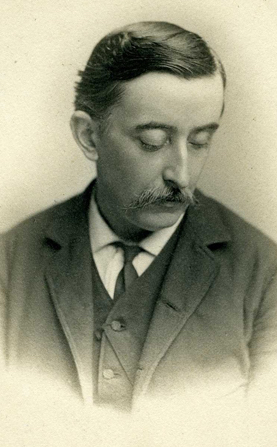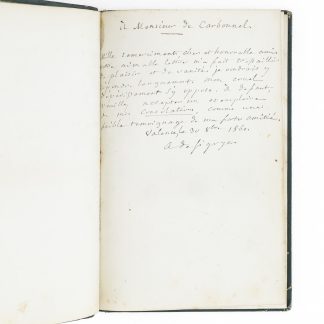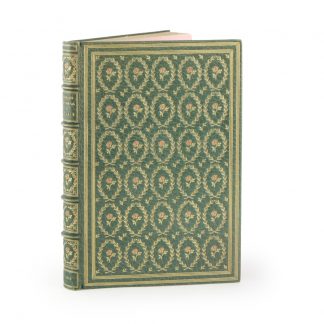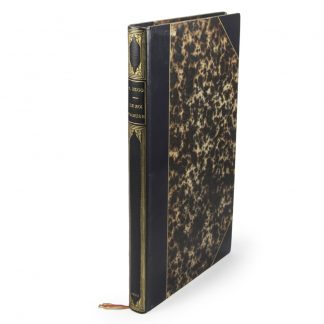Description
Superb German first editions, translated from English by Berta Franzos.
Publisher's binding in full parchment decorated in black and gold in the Jugendstil style. Ornaments by Emil Orlik, who was fascinated by Japan and studied wood engraving there.
Lotos, 1906
Published under the English title Glimpses of Unfamiliar Japan (1894), this collection of travel impressions was Lafcadio Hearn's first account of Japan. The book was a huge success in the West because Japan, whose borders had remained closed until the Meiji Restoration, was still largely unknown to the rest of the world.
Kokoro, 1909
In this collection of 15 portraits, first published in 1896, Lafcadio Hearn attempts to define the "Japanese soul"; the author obtained Japanese nationality a year after the book's publication.
Publisher's prospectus enclosed.
Abandoned by his family, Greek-born Lafcadio Hearn emigrated to the United States, where his talents as a writer enabled him to find work as a journalist. With a penchant for chronicling gloomy crimes, the young author quickly made a name for himself as a sensationalist reporter.
This did not prevent The Enquirer to fire him when, despite the anti-miscegenation laws then in force in Ohio, he married an African-American woman. Following their divorce, Hearn continued to report, in articles published by the Cincinnati Commericalabout the situation of black Americans in the aftermath of the American Civil War.
In 1877, Hearn moved to New Orleans, where he lived for ten years. There, he produced a large number of writings on the city and its surroundings - evoking voodoo in particular - which helped to build the image of the local culture as "distinct" from that of the rest of the United States. He also translated the works of Gérard de Nerval, Anatole France and Pierre Loti into English.
In 1890, Hearn moved to Japan, where he spent the rest of his life. Working as a teacher, he married Setsuko Koizumi, whose name he took, and became a naturalised Japanese citizen in 1896.
His writings on Japan, little known to Westerners at the time, helped to develop the myth of an "exotic" and "mysterious" country. Buoyed by the Japonism of the early 20th century, the public took a particular interest in his "Kwaidan", collections of strange stories and ghost stories. Jorge Luis Borges, among others, cited Hearn as one of his influences.
Bound in full Dutch parchment, smooth spine with gold title-piece framed with oriental floral decoration in black and gold, title in the centre of the upper cover framed with the same decoration. Heads gilt. Endpapers stamped in gold and decorated with a black stamp with a phoenix motif.
Covers very slightly soiled. Ex-libris in ink on the first white endpapers.









